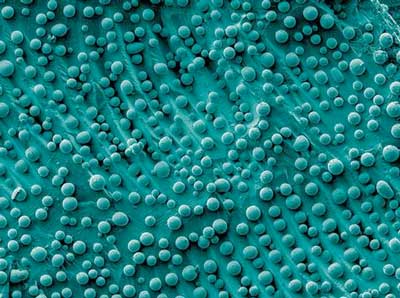| Aug 22, 2018 | |
Connecting the (nano) dots: How big-picture thinking can advance nanoparticle manufacturing(Nanowerk News) Nanoparticle manufacturing, the production of material units less than 100 nanometers in size, is proving the adage that “good things come in small packages.” |
|
| Today’s engineered nanoparticles are integral components of everything from the quantum dot nanocrystals coloring the brilliant displays of state-of-the-art televisions to the miniscule bits of silver helping bandages protect against infection. | |
 |
|
| Electron micrograph showing gallium arsenide nanoparticles of varying shapes and sizes. Such heterogeneity can increase costs and limit profits when making nanoparticles into products. A new NIST study recommends that researchers, manufacturers and administrators work together to solve this, and other common problems, in nanoparticle manufacturing. (Image: A. Demotiere, E. Shevchenko/Argonne National Laboratory) | |
| However, commercial ventures seeking to profit from these tiny building blocks face quality control issues that, if unaddressed, can reduce efficiency, increase production costs and limit commercial impact of the products that incorporate them. | |
| To help overcome these obstacles, the National Institute of Standards and Technology (NIST) and the nonprofit World Technology Evaluation Center (WTEC) advocate that nanoparticle researchers, manufacturers and administrators “connect the dots” by considering their shared challenges broadly and tackling them collectively rather than individually. | |
| This includes transferring knowledge across disciplines, coordinating actions between organizations and sharing resources to facilitate solutions. | |
| The recommendations are presented in a new paper in the journal ACS Applied Nano Materials ("Nanoparticle Manufacturing – Heterogeneity through Processes to Products"). | |
| “We looked at the big picture of nanoparticle manufacturing to identify problems that are common for different materials, processes and applications,” said NIST physical scientist Samuel Stavis, lead author of the paper. “Solving these problems could advance the entire enterprise.” |
| Source: NIST | |
|
Subscribe to a free copy of one of our daily Nanowerk Newsletter Email Digests with a compilation of all of the day's news. |
